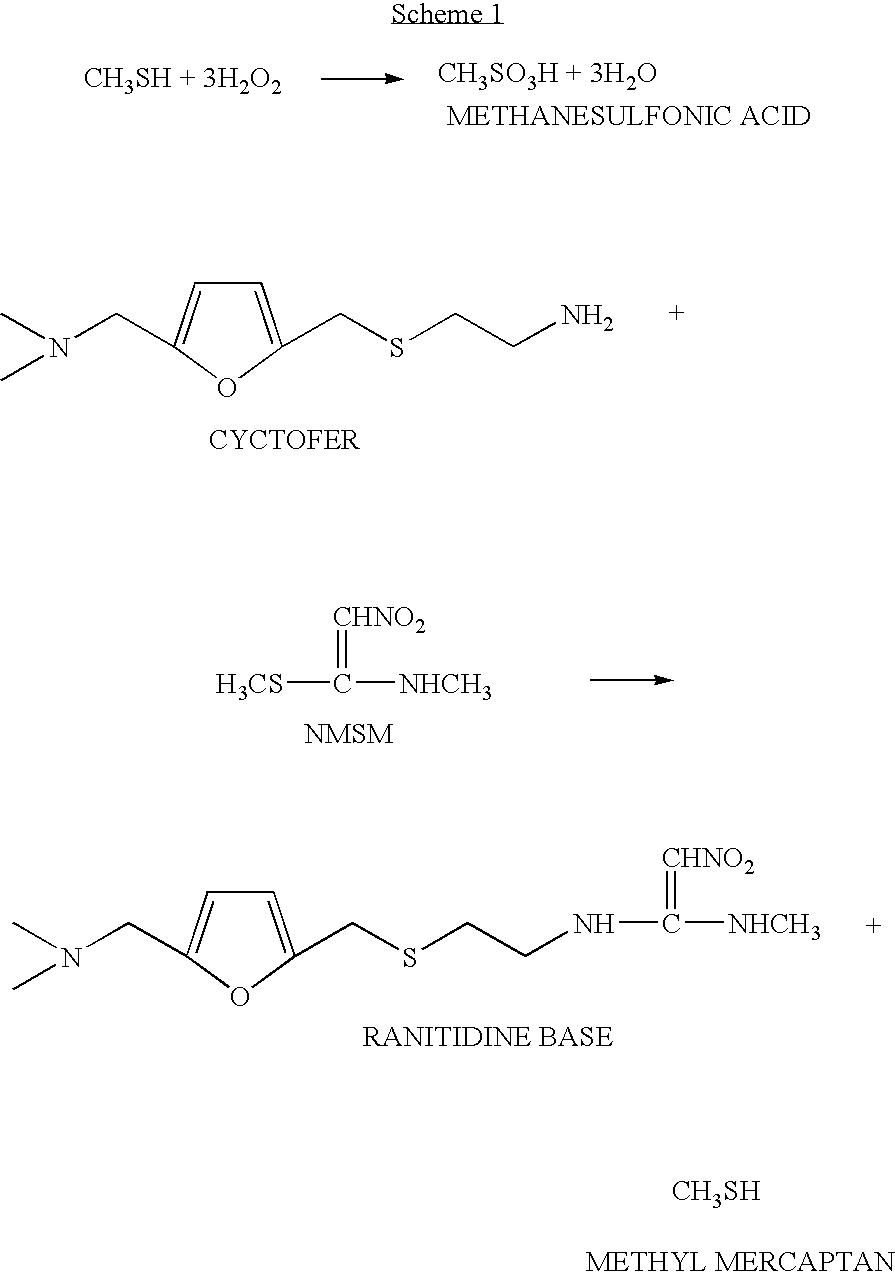Process for production of alkanesulfonic acid
a technology of alkanesulfonic acid and process, which is applied in the field of process for producing alkanesulfonic acid, can solve the problems of health hazards, affecting the lungs, nausea, headache, etc., and achieves the effect of eliminating air pollution and being easy to adap
- Summary
- Abstract
- Description
- Claims
- Application Information
AI Technical Summary
Benefits of technology
Problems solved by technology
Method used
Image
Examples
Embodiment Construction
[0033] The reaction set up consists of two parts; one for the generation of methyl mercaptan gas as practiced at industry in the manufacture of ranitidine base and the second one for the oxidation reaction of the methyl mercaptan gas thus generated in-situ. (Scheme 1)
[0034] First part of the reaction is as follows: Reaction is conducted in a 2.degree. L. round-bottomed 4-necked glass vessel to which a mechanical Stirrer, a thermometer socket, a pressure equalising funnel and an outlet tube are provided. This vessel is placed in a metallic tub having the provisions for heating and cooling system so that it provides the necessary temperature for the reaction. NMSM (99%) 3.5 Kg (23.65 mol) and water 8L were taken into the vessel, mixed well with the mechanical stirrer and raised the temperature to 40.degree. C. Then cystofer (95.5%) 5.3 Kg (23.65 mol) was added continuously over a period of 4 hrs while maintaining the temperature of the reaction at 40.degree. C. Reaction was continued ...
PUM
| Property | Measurement | Unit |
|---|---|---|
| mol % | aaaaa | aaaaa |
| temperature | aaaaa | aaaaa |
| reaction time | aaaaa | aaaaa |
Abstract
Description
Claims
Application Information
 Login to View More
Login to View More - Generate Ideas
- Intellectual Property
- Life Sciences
- Materials
- Tech Scout
- Unparalleled Data Quality
- Higher Quality Content
- 60% Fewer Hallucinations
Browse by: Latest US Patents, China's latest patents, Technical Efficacy Thesaurus, Application Domain, Technology Topic, Popular Technical Reports.
© 2025 PatSnap. All rights reserved.Legal|Privacy policy|Modern Slavery Act Transparency Statement|Sitemap|About US| Contact US: help@patsnap.com

